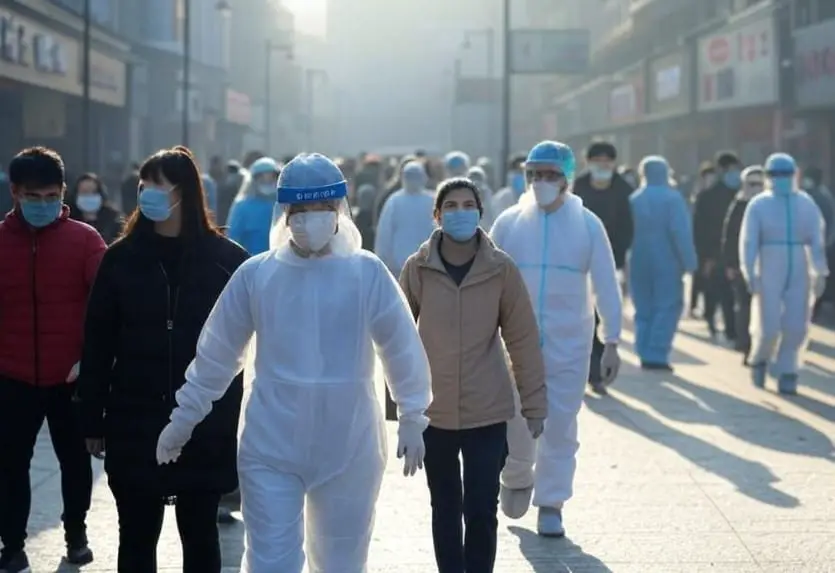Introduction to Human Metapneumovirus (HMPV)
Human Metapneumovirus (HMPV) is a significant yet often underrecognized cause of respiratory disease, affecting individuals across all age groups but particularly posing a threat to children, the elderly, and those with compromised immune systems. Identified for the first time in 2001, HMPV has since been acknowledged globally as a common pathogen responsible for a range of respiratory ailments from mild colds to severe pneumonia. This article aims to provide an in-depth exploration of HMPV, including its symptoms, transmission methods, diagnostic approaches, treatment options, prevention strategies, and the latest research developments.
Historical Background
The discovery of HMPV came about through the pioneering work of Dutch scientists who were investigating the reasons behind respiratory tract infections in children. They isolated a new virus that did not match any known respiratory pathogens at the time. This discovery was pivotal as it revealed a virus that had likely been circulating among humans for at least 50 years before its identification, explaining many previously undiagnosed respiratory illnesses.
Symptoms of HMPV
HMPV manifests with symptoms that are quite similar to those of other common respiratory viruses:
- Mild Symptoms: Include cough, runny or stuffy nose, fever, and sore throat. These are generally self-limiting, resolving within a week.
- Severe Symptoms: In those at higher risk, such as infants, the elderly, or immunocompromised individuals, HMPV can lead to:
- Bronchiolitis, characterized by wheezing and breathing difficulties.
- Pneumonia, presenting with severe cough, high fever, and shortness of breath, often requiring medical intervention.
The severity of symptoms can vary based on the individual's health status, previous exposure to the virus, and the strain of HMPV involved.
Transmission
Understanding how HMPV spreads is crucial for its prevention:
- Droplet Transmission: The virus is primarily transmitted through respiratory droplets from coughing or sneezing.
- Contact Transmission: Touching surfaces contaminated with the virus and then touching one's face, especially the nose, mouth, or eyes, can lead to infection.
- Airborne Spread: Though less common, it can occur in close settings like hospitals or nursing homes where aerosol particles might carry the virus further.
Diagnosis
Diagnosing HMPV involves:
- Clinical Evaluation: Based on symptoms and patient history.
- Laboratory Testing:
- RT-PCR (Reverse Transcription Polymerase Chain Reaction): The gold standard for detection, where viral RNA is identified from nasal or throat swabs.
- Antigen Tests: Less sensitive but can provide quick results.
- Serological Tests: Useful for epidemiological studies but not typically used for acute diagnosis due to the time it takes for antibodies to develop.
Treatment Options
There is no specific antiviral treatment for HMPV:
- Supportive Care:
- Hydration and rest are fundamental.
- Medications like acetaminophen or ibuprofen for fever and pain relief.
- For severe cases, hospital care might include oxygen therapy or mechanical ventilation.
- Antiviral Research: While no antivirals are currently approved for HMPV, ribavirin has shown effectiveness in animal models, suggesting potential for future human therapies.
Prevention Strategies
Preventing HMPV involves:
- Hygiene: Frequent hand washing, especially after contact with potentially contaminated surfaces.
- Isolation: Keeping infected individuals away from others to prevent spread.
- Cleaning: Regular sanitization of surfaces, particularly in environments like schools or care homes.
- Vaccination Prospects: Though no vaccine is yet available, research continues with promising candidates in preclinical phases.
Epidemiology and Seasonality
HMPV exhibits a seasonal pattern, with peaks often aligning with those of influenza and RSV (Respiratory Syncytial Virus) during late winter to spring in temperate climates. The virus's global distribution underscores its importance in public health, with a notable burden in pediatric care due to high infection rates in children under five.
Recent Developments in Research
- Vaccine Development: Efforts are intensifying with several vaccine candidates in the pipeline. These include live attenuated vaccines, subunit vaccines, and mRNA-based vaccines, with the latter showing early promise due to advancements in technology spurred by other viral outbreaks.
- Antiviral Drug Research: Alongside vaccines, there's exploration into drugs that could inhibit HMPV replication. Compounds targeting the virus's fusion protein or other key components are under investigation.
- Diagnostic Advances: Improvements in PCR techniques are making diagnosis faster and more accurate, crucial for timely treatment and outbreak management.
- Epidemiological Studies: Enhanced surveillance systems worldwide are providing better data on HMPV's impact, helping to tailor public health responses more effectively.
Clinical Challenges and Future Directions
The clinical management of HMPV remains challenging due to:
- Lack of Specific Treatments: The need for antivirals or vaccines is urgent to reduce the burden on healthcare systems.
- Diagnostic Overlap: Symptoms often mimic other respiratory infections, complicating diagnosis without lab confirmation.
- Vulnerability of High-Risk Groups: Necessitating better protective measures and perhaps specialized treatments for those most at risk.
Conclusion
Human Metapneumovirus, while not as globally notorious as some of its viral counterparts, represents a significant public health challenge. With ongoing research into vaccines and treatments, there's hope for better management of HMPV infections. Until then, understanding its nature, spread, and impact continues to be paramount for both medical professionals and the public in preventing and managing this respiratory threat.





